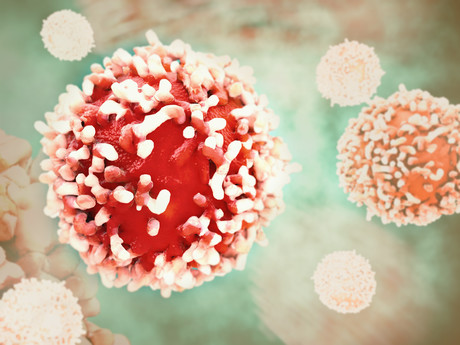Immune-enhancing agents eliminate cancer in mice

Stanford University researchers have injected immune-stimulating agents directly into solid tumours in mice — and eliminated all traces of cancer in the process. Their work has been published in the journal Science Translational Medicine.
Immune cells like T cells recognise the abnormal proteins often present on cancer cells and infiltrate in order to attack the tumour. However, as the tumour grows, it devises ways to suppress these T cells. The field of cancer immunotherapy is all about better harnessing the immune system to prevent this situation from arising.
There is no one way to conduct cancer immunotherapy. Some approaches rely on stimulating the immune system throughout the body, others target naturally occurring checkpoints that limit the anticancer activity of immune cells, and some even require a patient’s immune cells to be removed from the body and genetically engineered to attack tumour cells. But while many of these have been successful, they each have downsides — from side effects to high cost and lengthy preparation or treatment times.
Led by Professor Ronald Levy, senior author on the study and a pioneer in cancer immunotherapy, the Stanford team developed two immune-enhancing agents. One, a short stretch of DNA called a CpG oligonucleotide, works with nearby immune cells to amplify the expression of an activating receptor called OX40 on the surface of the T cells. The other, an antibody that binds to OX40, activates the T cells to lead the charge against the cancer cells.
By injecting microgram amounts of the two agents directly into the tumour site, the method works to reactivate the cancer-specific T cells inside. In effect, these T cells are ‘pre-screened’ by the body to recognise only cancer-specific proteins — and subsequently leave the original tumour to find and destroy other identical tumours throughout the body.
“When we use these two agents together, we see the elimination of tumours all over the body,” Professor Levy said. “This approach bypasses the need to identify tumour-specific immune targets and doesn’t require wholesale activation of the immune system or customisation of a patient’s immune cells.”
The approach was tested in laboratory mice with transplanted mouse lymphoma tumours in two sites on their bodies, with outstanding results. Injecting one tumour site with the two agents caused regression not just of the treated tumour, but also of the second, untreated tumour. This resulted in 87 of 90 mice being cured of the cancer. And although the cancer recurred in the remaining three mice, the tumours again regressed after a second treatment.
Similar results were observed in mice bearing breast, colon and melanoma tumours. Mice genetically engineered to spontaneously develop breast cancers in all 10 of their mammary pads also responded, with treatment of the first tumour that arose often preventing the occurrence of future tumours and significantly increasing the animals’ life span.
“We saw amazing, body-wide effects, including the elimination of tumours all over the animal,” Professor Levy said.
Finally, lead author Dr Idit Sagiv-Barfi explored the specificity of the T cells by transplanting two types of tumours into the mice. She transplanted the same lymphoma cancer cells in two locations and transplanted a colon cancer cell line in a third location. Treatment of one of the lymphoma sites caused the regression of both lymphoma tumours but did not affect the growth of the colon cancer cells.
“This is a very targeted approach,” Professor Levy said. “Only the tumour that shares the protein targets displayed by the treated site is affected. We’re attacking specific targets without having to identify exactly what proteins the T cells are recognising.”
The researchers believe the local application of very small amounts of the agents could serve as a rapid and relatively inexpensive cancer therapy that is unlikely to cause the adverse side effects often seen with body-wide immune stimulation. One of the agents is currently already approved for use in humans, while the other has been tested for human use in unrelated clinical trials. A clinical trial was launched in January to test the effect of the treatment in patients with lymphoma.
Professor Levy believes the treatment could be useful for many tumour types, ultimately envisioning a future in which clinicians inject the agents into solid tumours in humans prior to surgical removal as a way to prevent recurrence — or even to head off the development of future tumours that arise due to genetic mutations like BRCA1 and 2.
“I don’t think there’s a limit to the type of tumour we could potentially treat, as long as it has been infiltrated by the immune system,” he said.
Mini lung organoids could help test new treatments
Scientists have developed a simple method for automated the manufacturing of lung organoids...
Clogged 'drains' in the brain an early sign of Alzheimer’s
'Drains' in the brain, responsible for clearing toxic waste in the organ, tend to get...
World's oldest known RNA extracted from woolly mammoth
The RNA sequences are understood to be the oldest ever recovered, coming from mammoth tissue...




